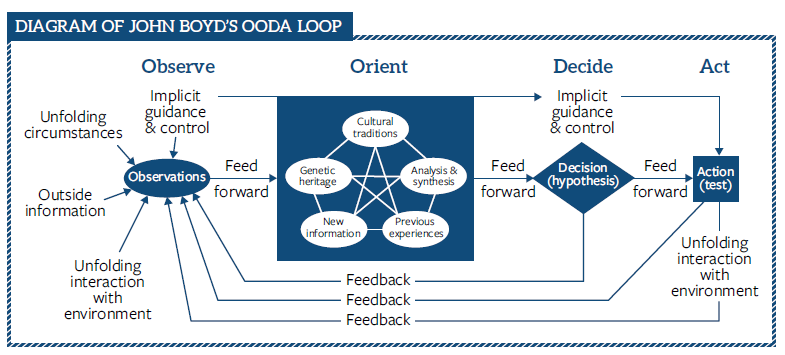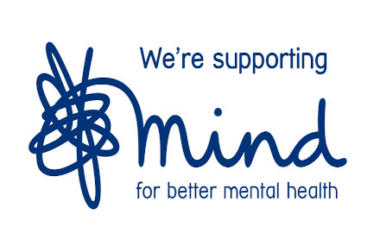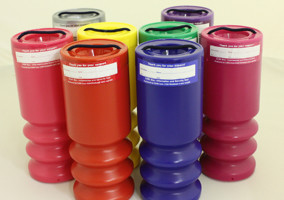In what now seems the dim and distant past (early March), I was focused on striking a balance that ensured we at Bromley, Lewisham & Greenwich (BLG) Mind were neither overreacting or underreacting to the emerging outbreak of coronavirus, while preparing for what might come next. In doing so, we were led by the guidance issued by the government and by ensuring the safety and wellbeing of our staff, volunteers and vulnerable clients.
With the guidance changing frequently and fresh implications emerging daily, it quickly became apparent that cultivating an ability to respond in an agile way would be critical to successfully navigating the challenges presented by Covid-19.
As things developed further, I was struck by a sense that my role as a charity leader had perhaps never felt so important. It is unsurprising that when people feel they have lost their bearings and reference points, they look to their leaders to provide direction. I needed to respond to this, but to do so in a way that built on the principles of compassionate leadership so that staff were empowered and connected.
Communication is key
Communication is of course always central to effective leadership, but with staff now all working from home, and new issues frequently emerging into a landscape of uncertainty, it took centre stage, and a large proportion of my time.
To help reassure our staff and volunteers and to provide them with the information and support they needed, we prioritised ensuring that internal communication was regular, responsive, frequent, clear and authentic. The first version of our Covid-19 guidance for staff was sent out on 12 March, and five weeks later we were on to issue six. The memos I usually sent to all staff and volunteers every month became a weekly fixture (always on a Thursday), and managers were asked to prioritise regularly checking in with their teams, both individually and collectively.
External communication has also been vital, as we look to ensure the public know what support we are able to provide, and that commissioners and funders are informed about and reassured by our response to the crisis. I prioritised being proactive, clear, compassionate and realistic in the way we managed these communications.
Rapid response force
With agility pinpointed as a key requirement, we set up structures that enabled rapid decision-making. Our senior management team, which comprises three people, began meeting (remotely) every morning at 9am, and we established a Covid-19 committee as a four-person subcommittee of the board of trustees. This committee was established by the board on 18 March with delegated authority to make decisions related to our response to the coronavirus outbreak. Membership is the chair, vice-chair, treasurer and our trustee with HR expertise, with senior managers in attendance. The committee is convened as required, and decisions are taken by email where possible (usually within 24 hours) or through a video call where they are more complex or contentious. In particular, this has enabled us to make quick decisions over people issues, such as the furloughing of staff and provision of emergency dependents leave, meaning we could give staff clarity and provide them with support while minimising financial losses.
Taking decisions
In the early stages of the outbreak, there were many decisions that needed to be taken quickly (often in the absence of full information), and where delay would cause real problems. But there were also decisions that could wait. Where possible, we delayed making decisions, particularly ones with far-reaching consequences, until more information was available so that we could orient ourselves and be clearer on the best way forward. We utilised the OODA loop (Observe, Orient, Decide, Act) which was developed by military strategist and US Air Force Colonel John Boyd, and looked to run that as quickly and effectively as possible.
In common with many organisations, some of the decisions we had to take were painful ones. As the writer Glennon Doyle puts it, sometimes we need to “just do the next right thing, one thing at a time”. Good leadership means doing that even when it hurts. Taking the decision to close BLG Mind’s Dementia Support Centres, which provide vital respite to dozens of family carers, and knowing that we wouldn’t receive income while they were closed, was one such painful decision. Another was the decision to furlough some staff, knowing this would mean those staff were unable to work, but also that we could safeguard their jobs and some services in the longer term.
A new way of doing things
One of the silver linings of the dark coronavirus cloud has been the inventiveness, flexibility and determination that has enabled us to adapt to new ways of doing things at a speed we would not have thought possible. They say that necessity is the mother of invention, and I saw this lived out many times as, for example, we shifted in a matter of days from being an organisation with very little home working to being one where all staff were not only working from home, but delivering much-needed support to people remotely.
Across the organisation, peer support groups began meeting online, courses and workshops were adapted for delivery over Zoom and information on supporting your wellbeing at home was quickly developed. This change process needed to be backed up by training and support for staff, such as a step-by-step guide to making use of Microsoft Teams and an interactive online training session in delivering mental health support remotely.
All of this was happening against a backdrop of an emerging, unique mental health challenge. We are yet to see the full extent of this, but we do know that societal restrictions can cause isolation and anxiety, many people are experiencing unexpected loss and trauma, and causes of poor mental health such as poverty, debt and unemployment are set to rise dramatically. At BLG Mind, this has led us to consider new services as well as adapt our current provision, with issues such as digital exclusion and trauma-informed approaches acquiring a new significance.
A key factor in making these rapid transitions was ensuring that we did so with a system-wide as well as an organisational perspective. Now is not the time for defending organisational boundaries but for showing how we can have a greater impact by working alongside our statutory and voluntary sector partners.
Looking after staff and volunteers
Wellbeing at work is a familiar theme for us as a mental health charity. However, I have never felt so aware of the importance of supporting the wellbeing of our staff and volunteers than over recent weeks. We put in place a number of structures to ensure that our people felt connected, valued and listened to, including:
- Self care society – A weekly cross-organisational facilitated online group focused on wellbeing, self-care and opportunities for interaction, attended by anywhere between 20 and 50 people.
- Daily wellbeing shares – People were encouraged to share their own tips for wellbeing and these were curated and sent out in daily emails.
- Increased meeting frequency – With the natural in-person interaction of the office on hold, many teams began daily video-call catch ups and managers’ meetings became a well-attended weekly event.
Managers were encouraged to recognise and respond to the unique issues and challenges for their staff, as people’s home situations suddenly intruded on their work in new ways.
Looking after yourself
Leading in uncharted waters is a real challenge, and the workload involved in doing so has been huge. As a result, it has been important for me to pay attention to my own wellbeing during this period. Although working long days, I have kept my work in one room and closed the door on it at the end of the day, switched off my phone in the evenings and at weekends, and I even managed to take a week’s leave to recharge my batteries. Establishing these boundaries hasn’t felt easy, as the regular boundaries created by going into and coming home from the office are missing, but it is perhaps more important than ever and also feels like good modelling for the rest of the organisation.
I’ve also benefited from accessing peer support from colleagues across the Mind network, including through weekly video calls with other chief executives and chairs from across London.
An eye on the future
It is still early days, and the future holds much uncertainty. However, I am starting to consider what needs will emerge as we travel through the next phases of this crisis, and the role our organisation can play by being ready to respond to these.
I am also focused on positioning the organisation to come safely out the other side, knowing that not all charities will manage to do so. This will require good stewardship of our finances, our relationships with other organisations and our staff and volunteers, and there will no doubt be more difficult decisions ahead.
Finally, I need to acknowledge how much we still don’t know. In providing leadership through these times of uncertainty, we will need to continue running the OODA loop, continue listening to and communicating with our staff, volunteers and clients, and continue showing our adaptability and agility. For one thing is sure, we cannot return to where we were before Covid-19. Now more than ever, the future is another country. To thrive there, we will need to take and thoughtfully apply the learning from this strange period.

Oh, and I must update our business continuity plan.
Ben Taylor is chief executive at Bromley, Lewisham and Greenwich Mind
Related articles












